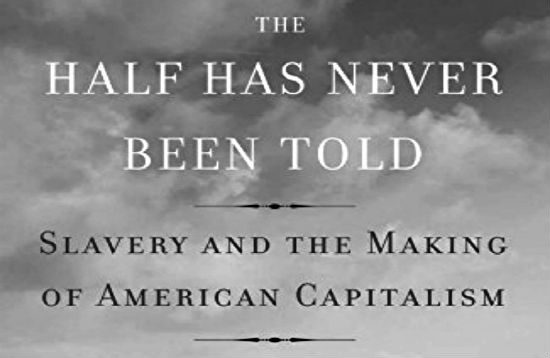Michael Gerson’s long (loooong) cover story for The Atlantic provides a good summary of one standard overview of white evangelical history and the ways in which it has led, inexorably, to the disgraceful current state of affairs — 81 percent, emphatic, continuing support for the white nationalist demagoguery of Donald J. Trump.
The Atlantic is a great and storied institution with a proud history going back more than 160 years. 160 years is also, coincidentally, about how long it takes all the ads to load if you try to scroll all the way through and read Gerson’s piece. That’s fair warning before you click on the link — “The Last Temptation.”
Gerson’s essay is almost worth it, as it really is a thoughtful, insightful discussion of the shaping of white evangelicalism — and thus the shaping of contemporary American politics, culture, and life. I’d say it’s the second-best magazine piece on the subject to be published yesterday. The better one, I think, is Chris Ladd’s “Why White Evangelicalism Is So Cruel.” (Ladd’s piece, alas, is was published by Fortune Forbes, and their website is just as hostile to would-be readers as The Atlantic’s.*)
Ladd’s essay serves as a helpful corrective to Gerson’s longer, larger piece because Ladd centers the defining facts of slavery, Jim Crow, and civil rights. Gerson recognizes that these are part of the picture, but that’s inadequate. These factors are not also a part of the story, they are the story. Everything else that Gerson eloquently summarizes is all really just garnish and side dishes.

So if you’re going to risk having to reconfigure your browser and reinstall your apps just to read one of those essays, I recommend picking Ladd’s. He cuts to the heart of the matter:
Modern, white evangelicalism emerged from the interplay between race and religion in the slave states. What today we call “evangelical Christianity,” is the product of centuries of conditioning, in which religious practices were adapted to nurture a slave economy.
This is a necessary supplement — a necessary corrective — to Gerson’s long and otherwise fine history lesson. Ladd bluntly states the most basic fact about white evangelical Christianity, which is that it is and has always been intimately bound up with slavery and white nationalism. However else we attempt to define or describe it, “evangelical” Christianity has always been Bible Christianity — a form of popular Protestantism based on popular use of the Bible as easily accessible in translation. In the English-speaking world, this is not something that ever did or could exist before the era that simultaneously gave us the trans-Atlantic slave trade and the creation of whiteness. These things are siblings — twins born at the same time.
Ladd writes:
There is still today a Southern Baptist Church. More than a century and a half after the Civil War, and decades after the Methodists and Presbyterians reunited with their Yankee neighbors, America’s most powerful evangelical denomination remains defined, right down to the name over the door, by an 1845 split over slavery. …
What developed in the South was a theology carefully tailored to meet the needs of a slave state. Biblical emphasis on social justice was rendered miraculously invisible. A book constructed around the central metaphor of slaves finding their freedom was reinterpreted. Messages which might have questioned the inherent superiority of the white race, constrained the authority of property owners, or inspired some interest in the poor or less fortunate could not be taught from a pulpit. Any Christian suggestion of social justice was carefully and safely relegated to “the sweet by and by” where all would be made right at no cost to white worshippers. In the forge of slavery and Jim Crow, a Christian message of courage, love, compassion, and service to others was burned away.
Stripped of its compassion and integrity, little remained of the Christian message. What survived was a perverse emphasis on sexual purity as the sole expression of righteousness, along with a creepy obsession with the unquestionable sexual authority of white men. In a culture where race defined one’s claim to basic humanity, women took on a special religious interest. Christianity’s historic emphasis on sexual purity as a form of ascetic self-denial was transformed into an obsession with women and sex. For Southerners, righteousness had little meaning beyond sex, and sexual mores had far less importance for men than for women. Guarding women’s sexual purity meant guarding the purity of the white race. There was no higher moral demand.
That’s the root and trunk of the matter. All of the many other important factors that Gerson discusses — Finney and the 19th-century activists, Temperance and Scopes, the fundamentalist/modernist controversy, the shift from optimistic postmillennial eschatology to the fatalistic premillennial dispensationalism of Rapture folklore, the generations of dishonest and futile raging against the reality of evolution, the rise of the religious right and the culture war battles over homosexuality and abortion — are branches stemming off from that central fact of American Christianity.
Ladd overstates the regional aspect of this. He writes of slavery as an exclusively Southern reality, which came to be true only after nearly two centuries of American slavery and “Bible Christianity” developing side by side throughout all the colonies. There were slaves in New York City, in Philadelphia, in New Jersey and New England. Jonathan Edwards enslaved children and stole their labor for a lifetime, first in Connecticut and then at Princeton. George Whitefield owned a Southern plantation, but to do so he had to first force through legislation legalizing slavery in Georgia at a time when it was illegal there — but still legal in Boston. Slavery shaped American Christianity not just in the “slave states,” but also long before that in the slave colonies — North and South.
That over-emphasis on the Southern-ness of white evangelicalism also sidelines the role of the wannabe-Cromwells of New England and the way their King Philip’s War set the template for a providential notion of genocide against indigenous people. This, too, is inextricably tied up with American Christianity, so much so that — like slavery and segregation — it can be almost impossible to trace which influenced and shaped the other more.
In any case, I want to return to Michael Gerson’s impressive and widely discussed essay and all those also important branches stemming off from the central trunk that Ladd identifies. But Ladd has already said the most important thing that needs to be said about Gerson’s piece.
– – – – – – – – – – –
*Update/Edit: Forbes has apparently un-published Ladd’s essay, without explanation. So I’ve amended the link to the full text on Ladd’s own much more reader-friendly site. I originally confused Forbes and Fortune in this post, something I’m sure I’ll do again in the future since, you know, all those overclass rich-people magazines look the same from down here.












